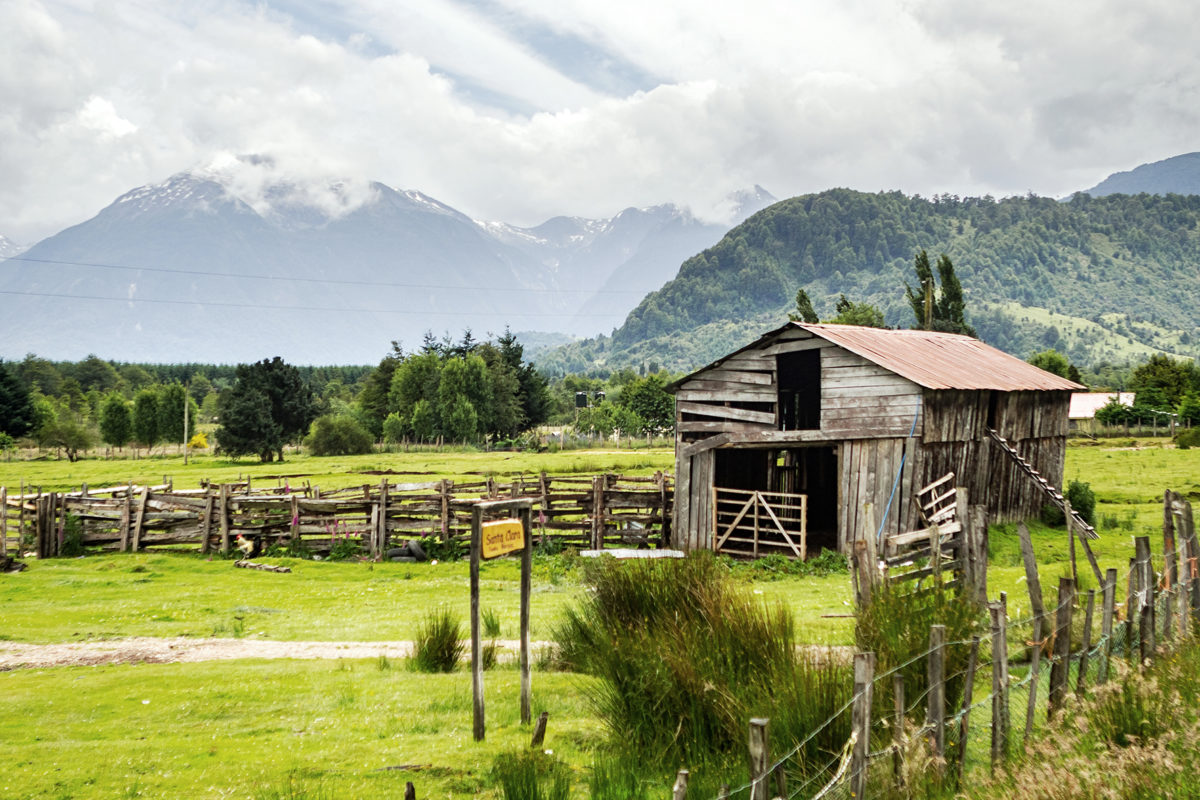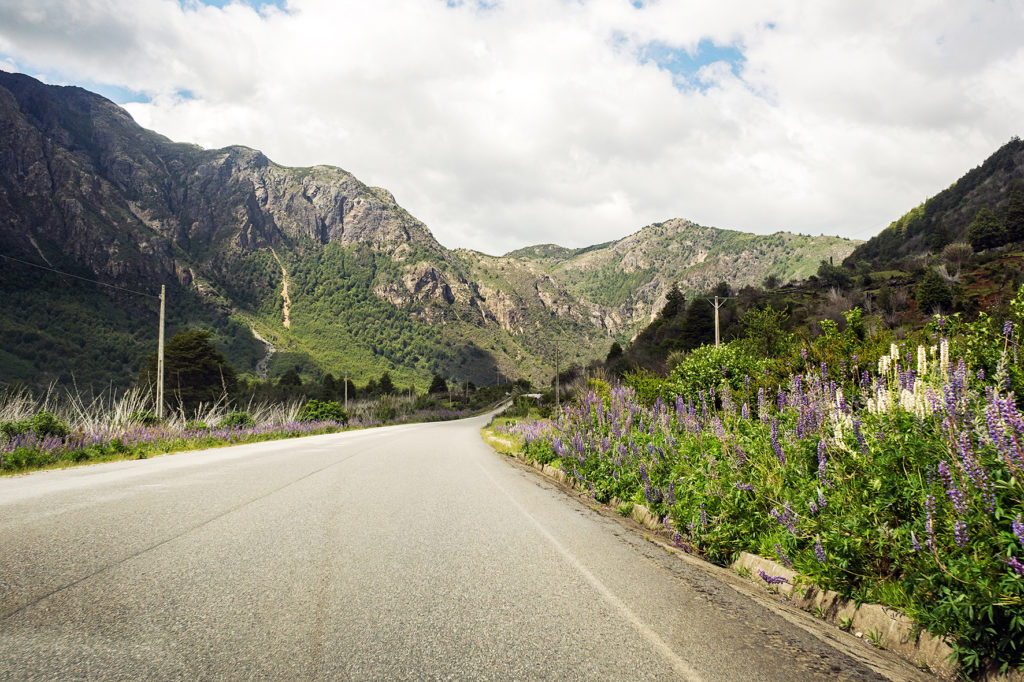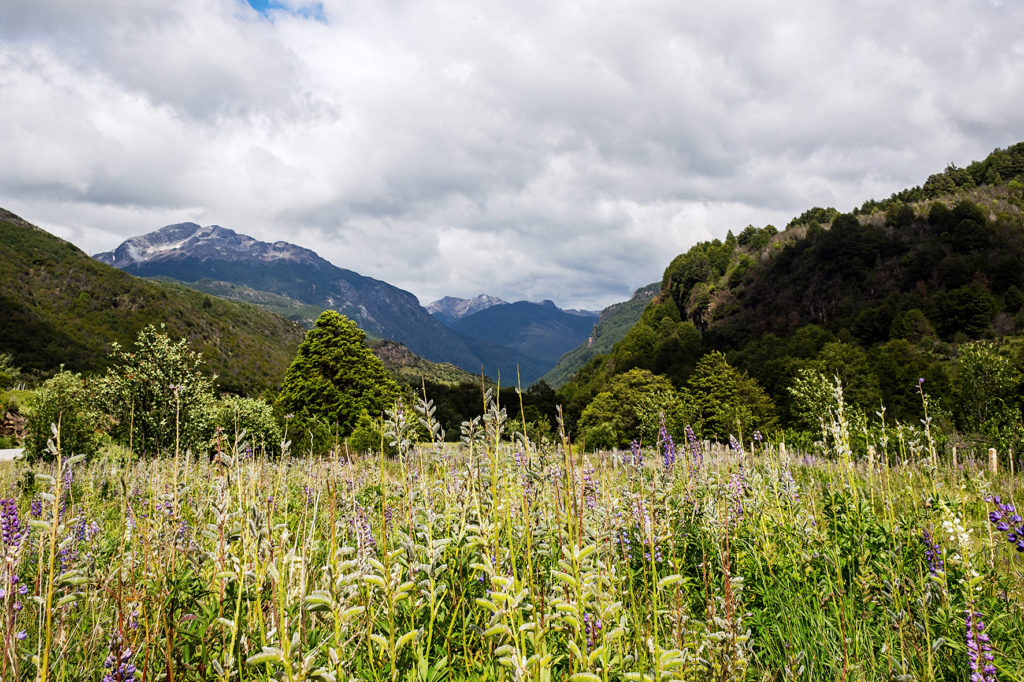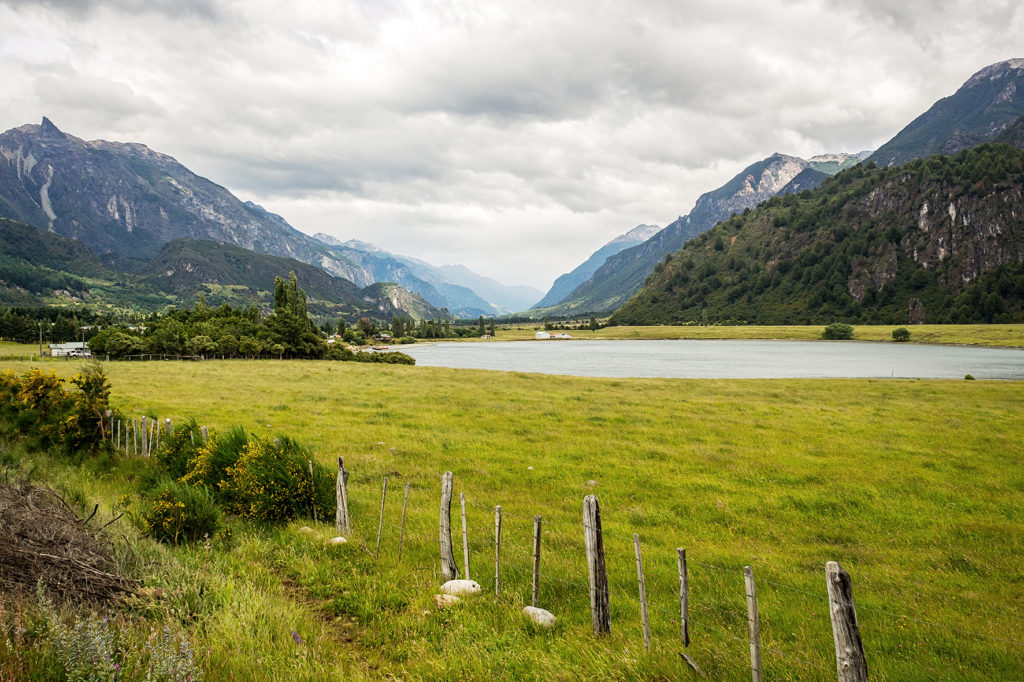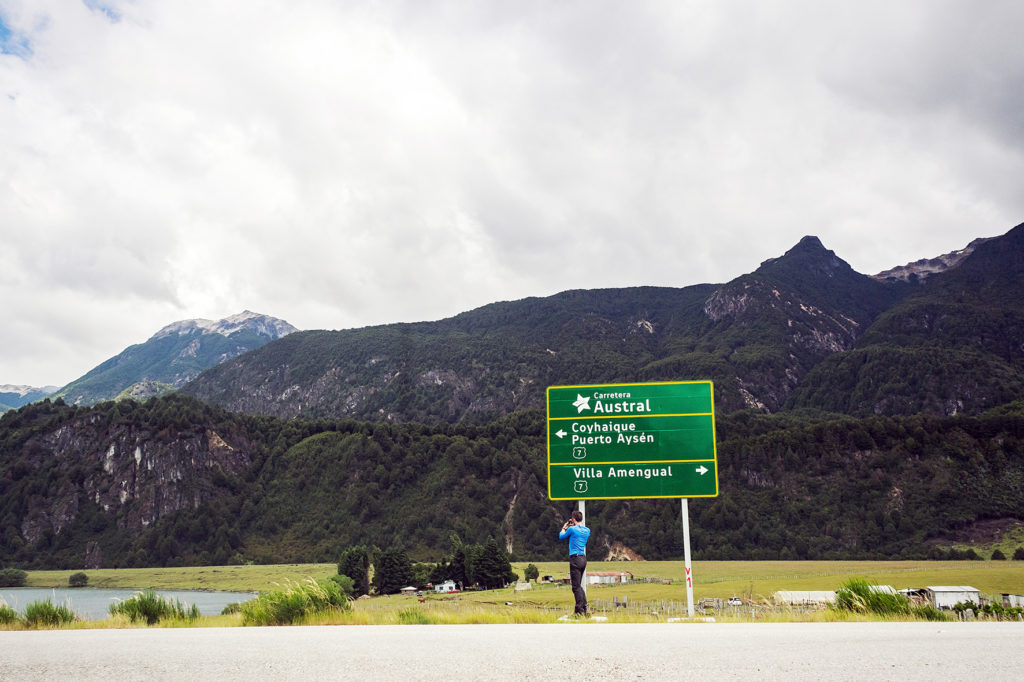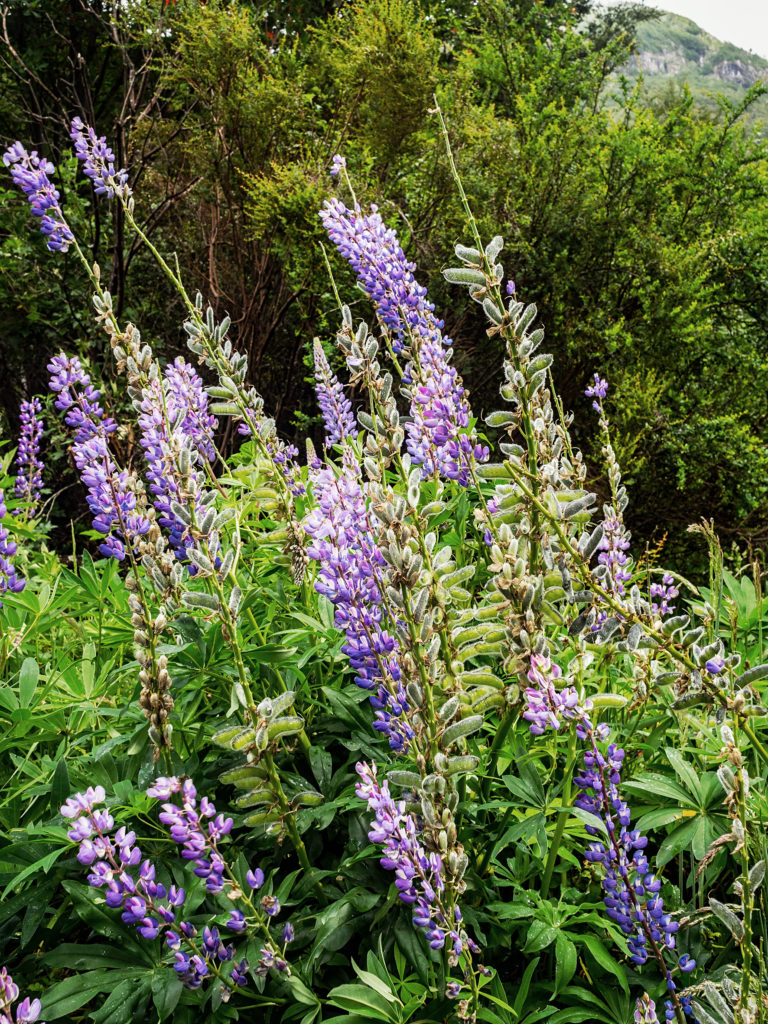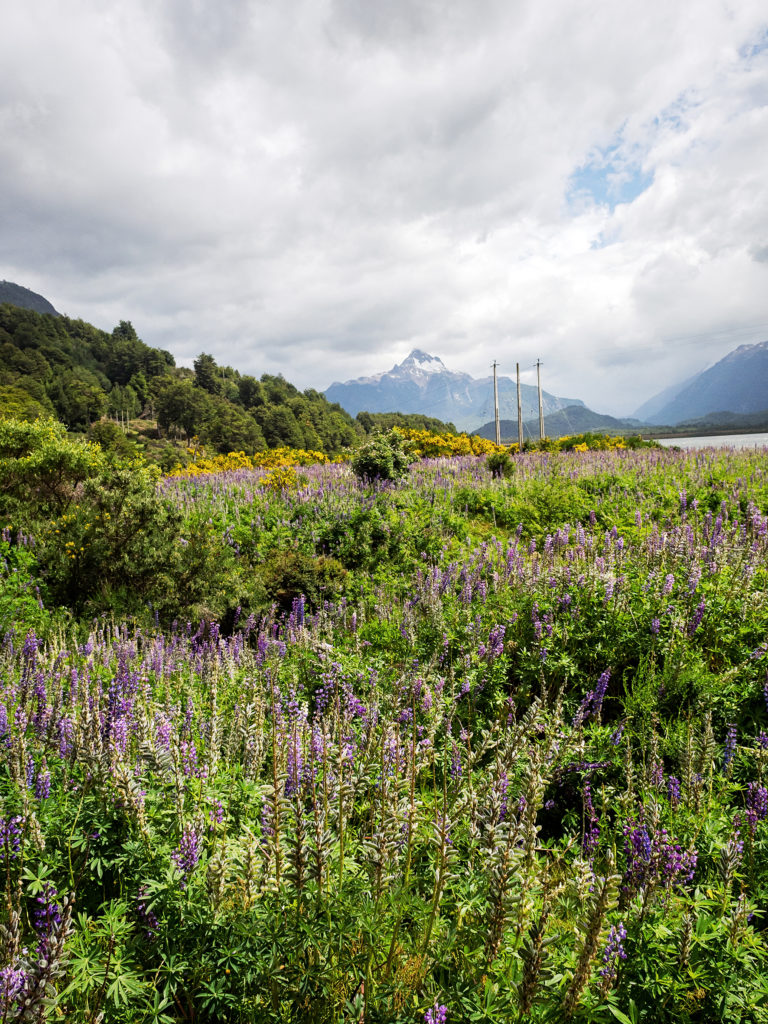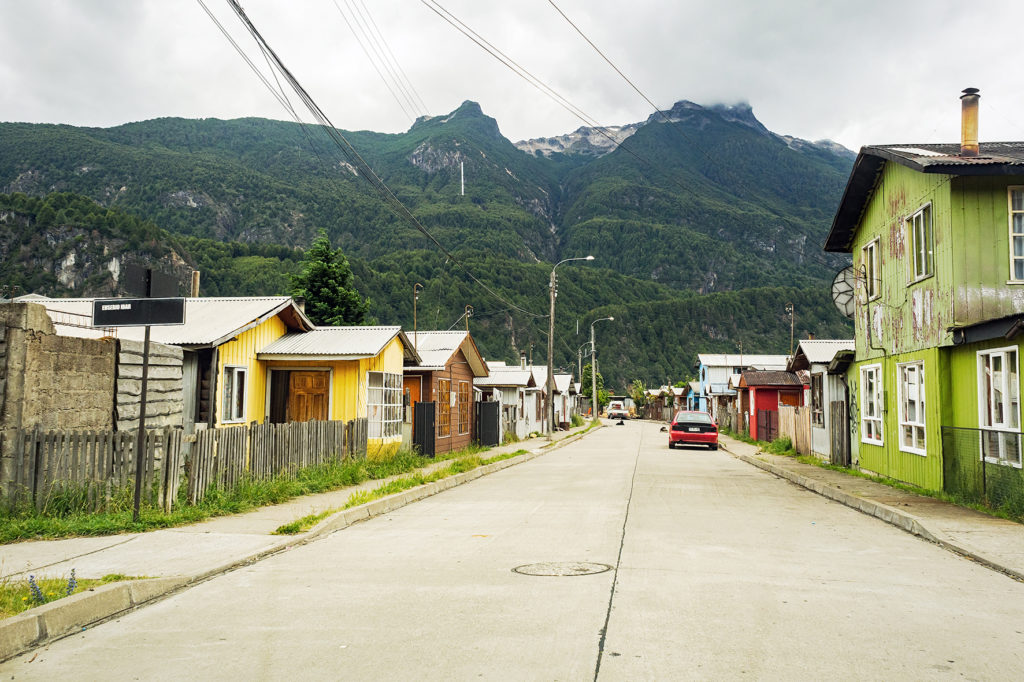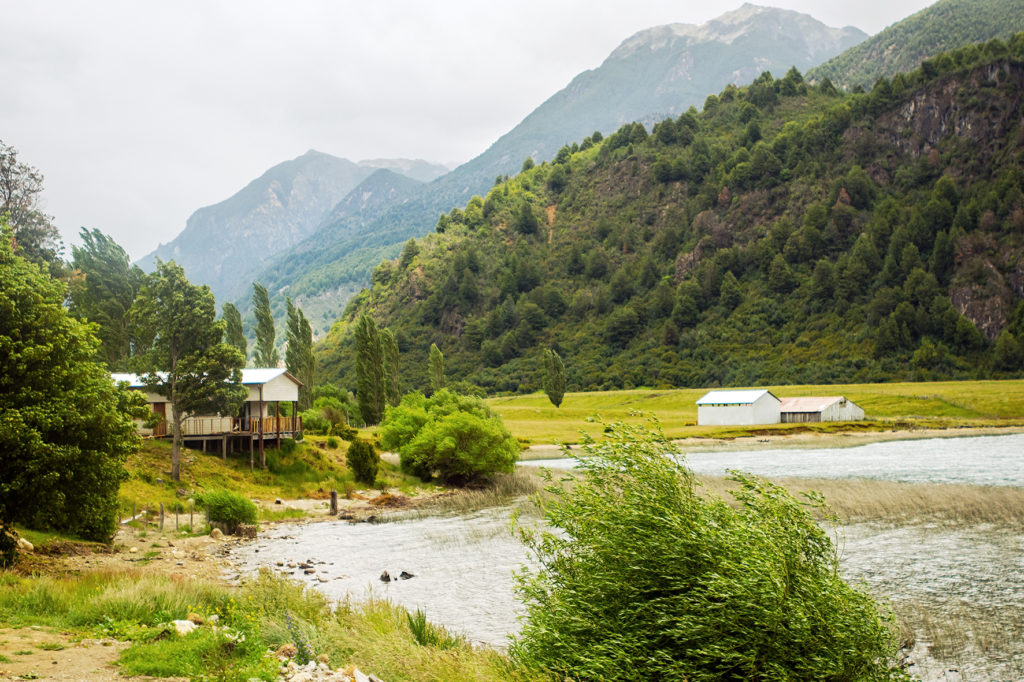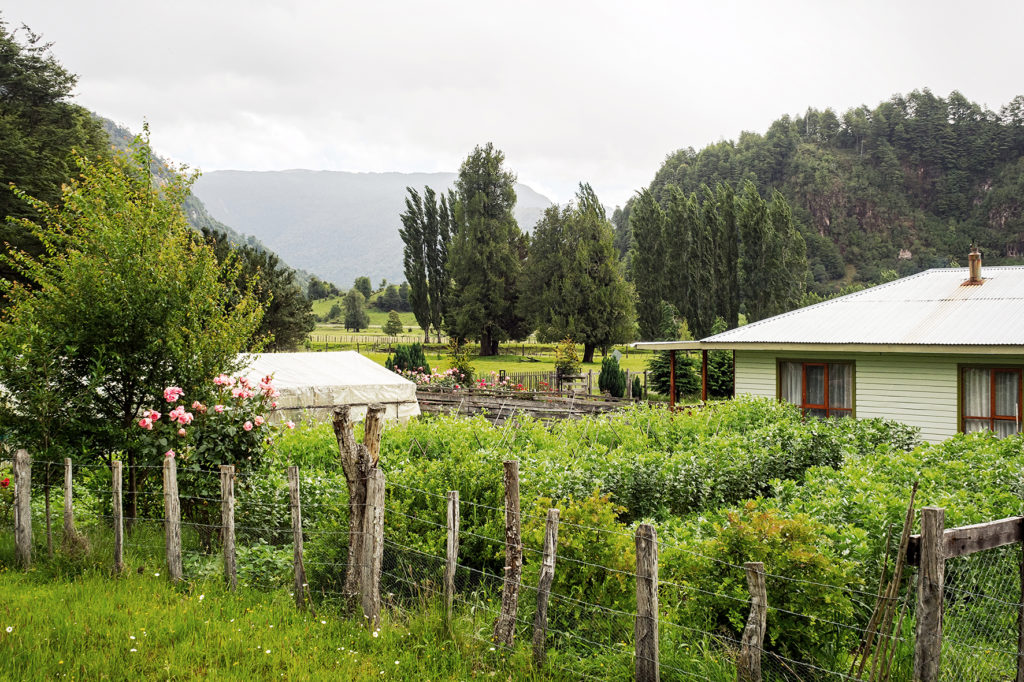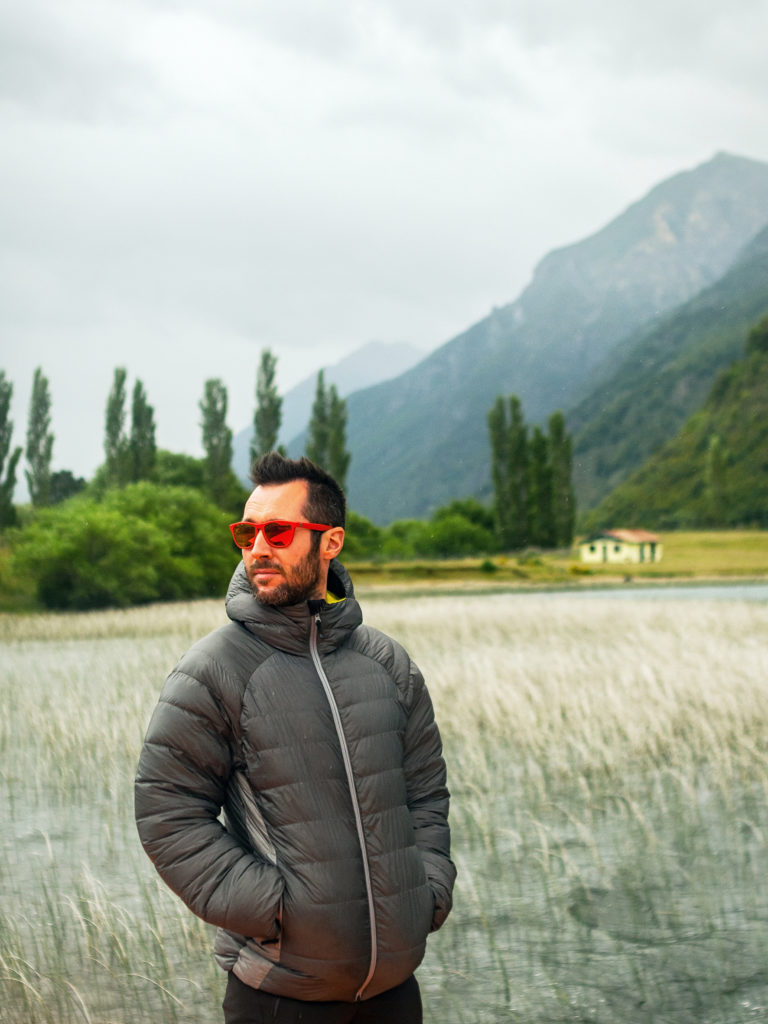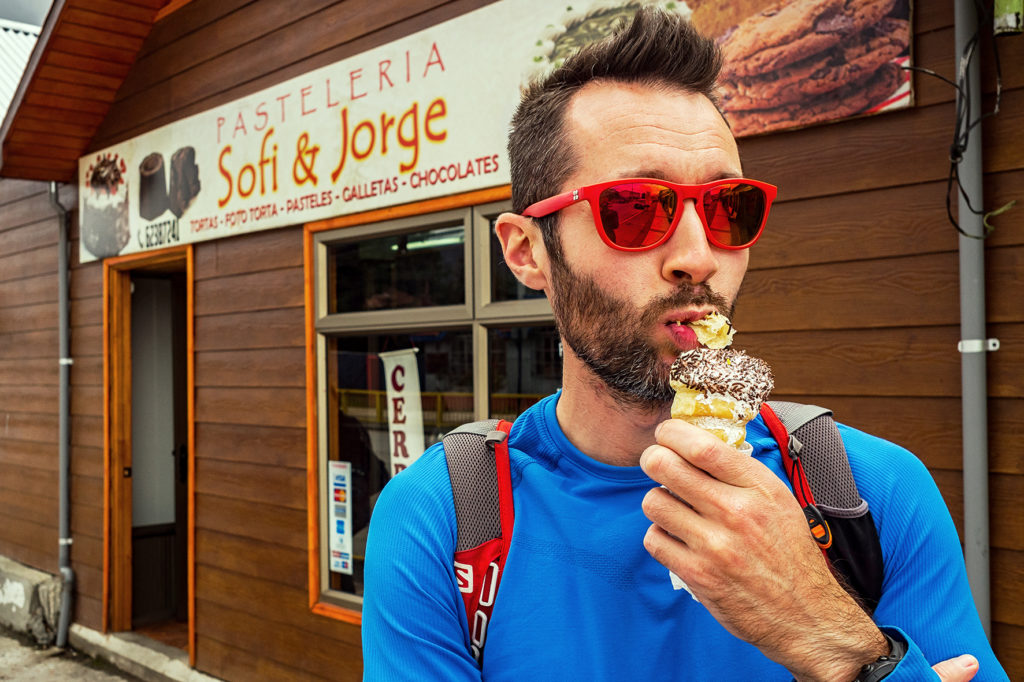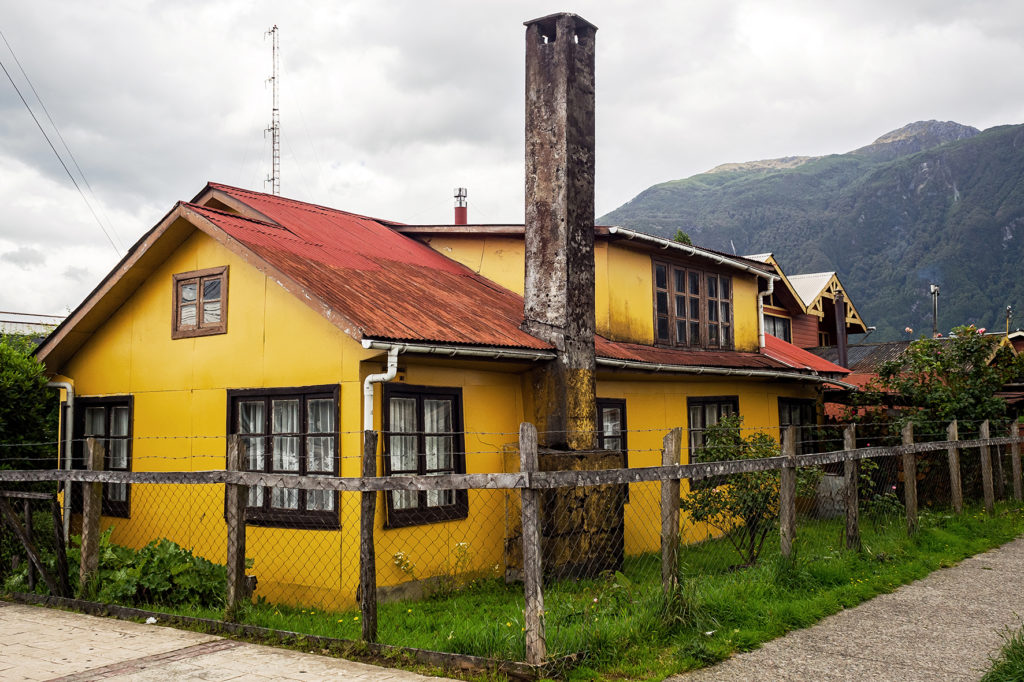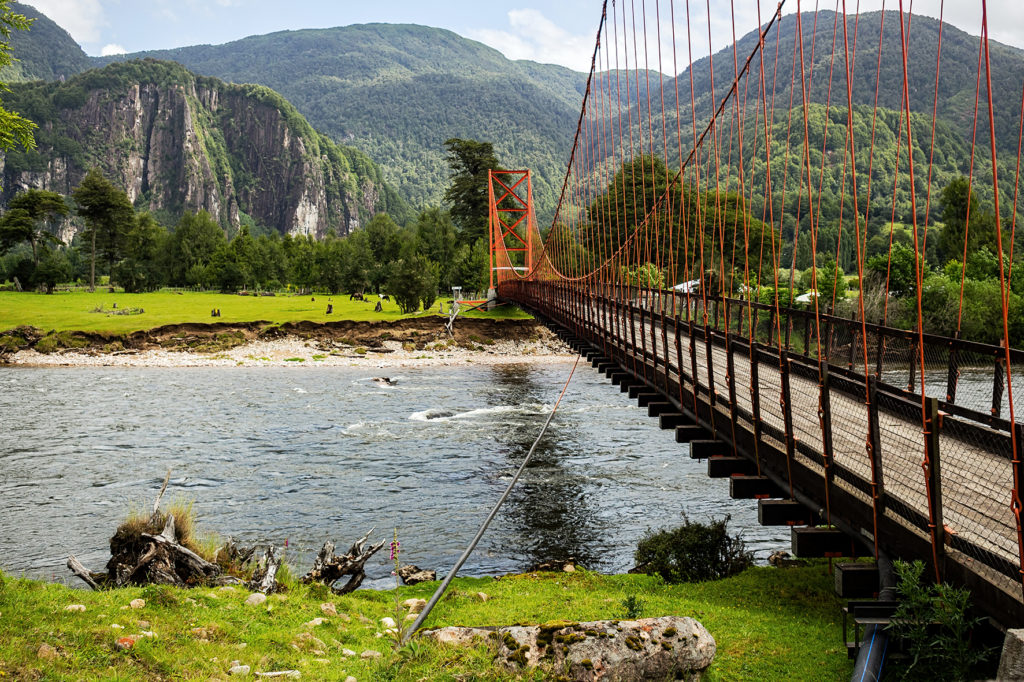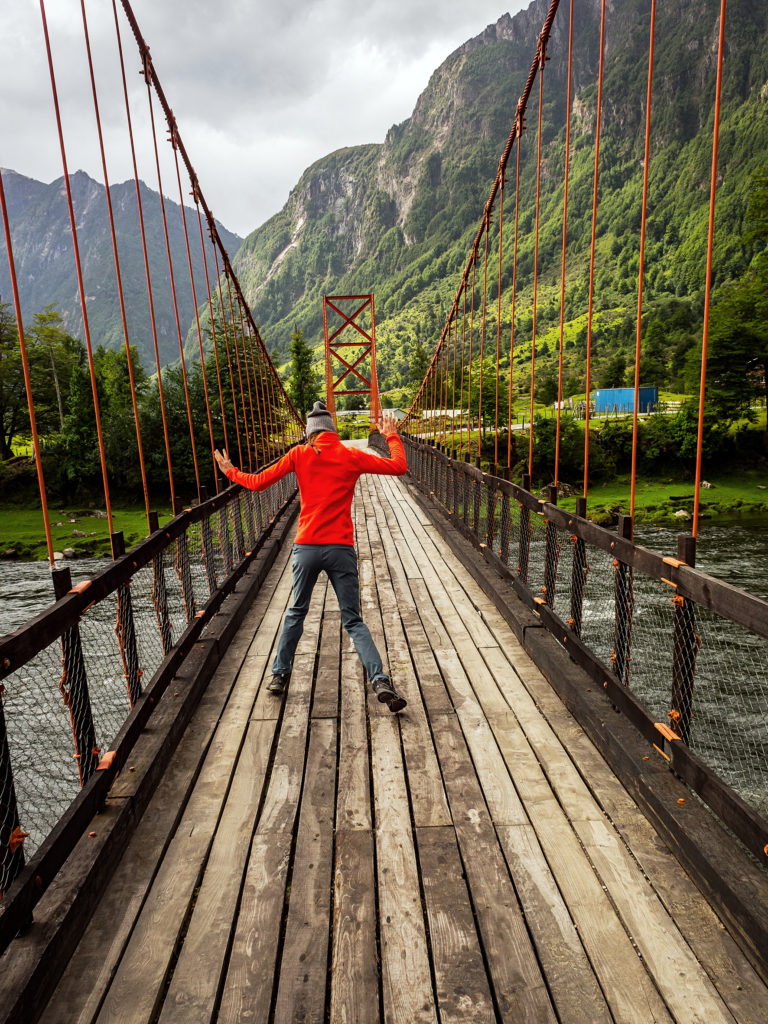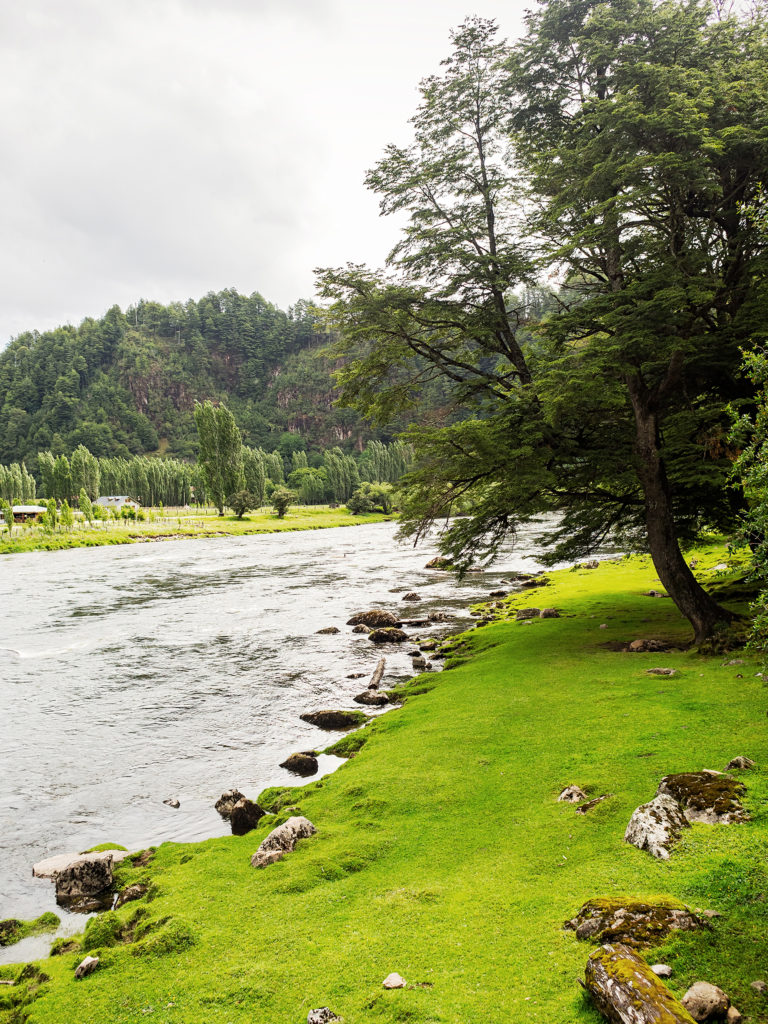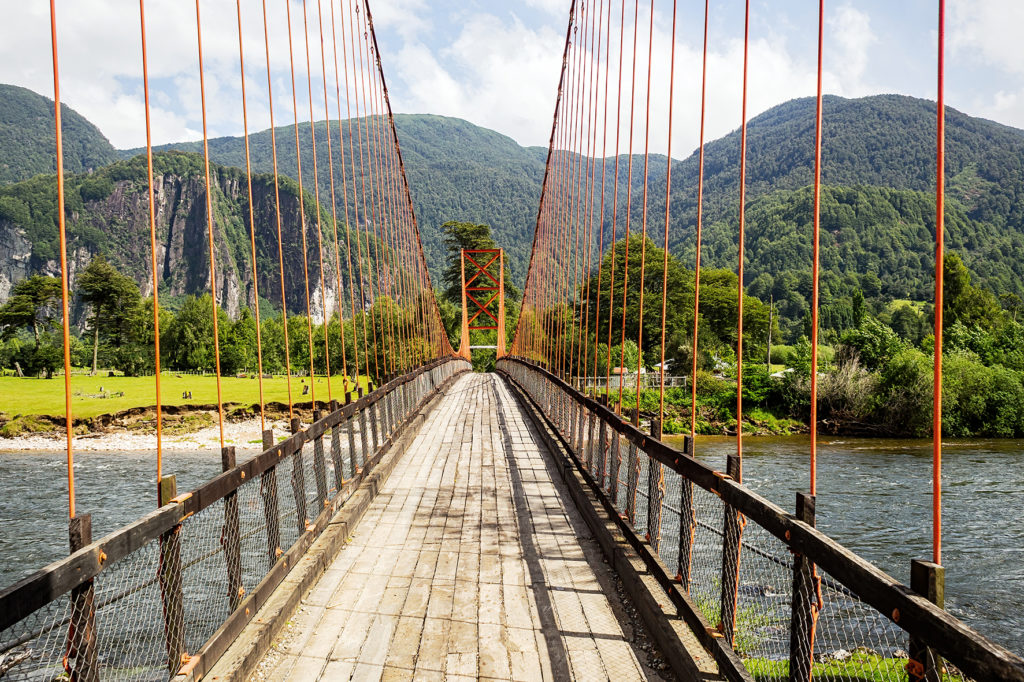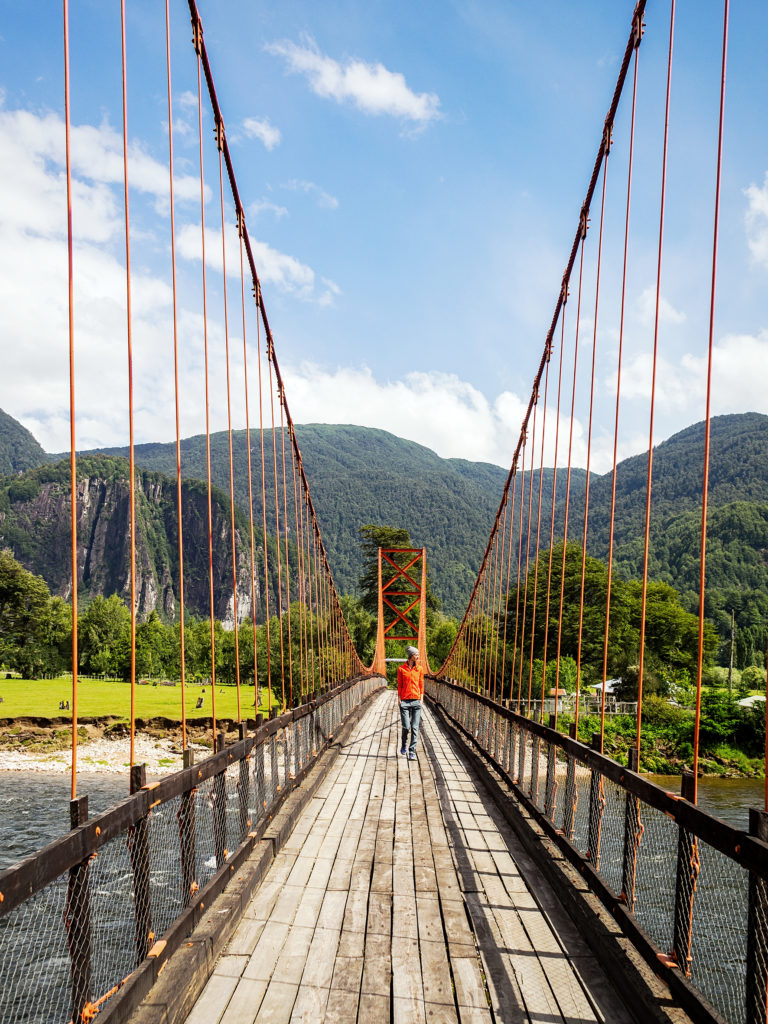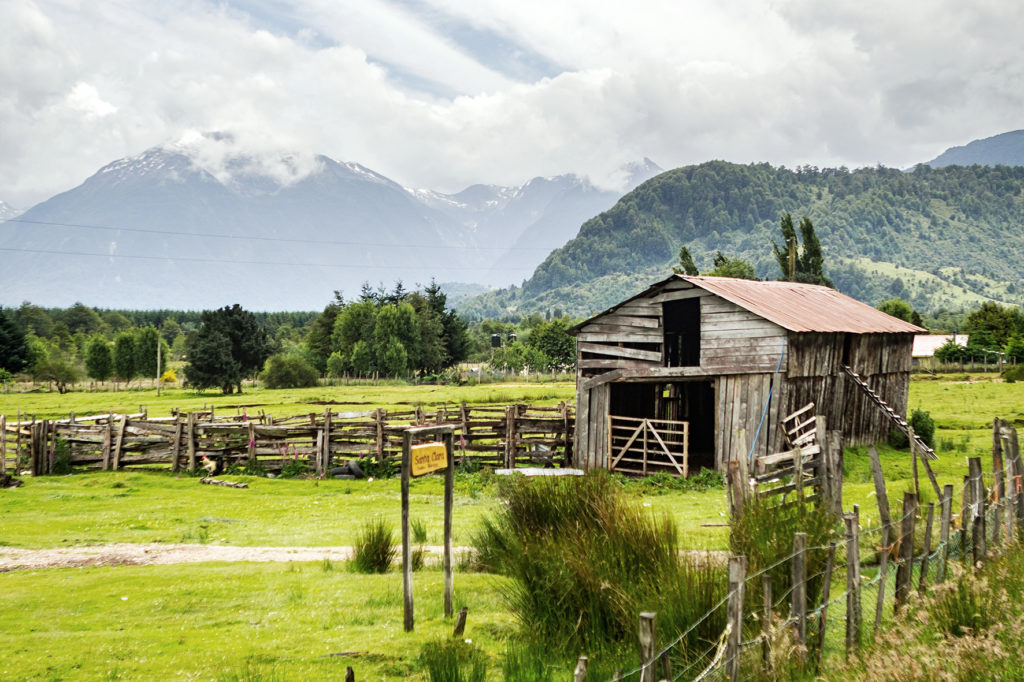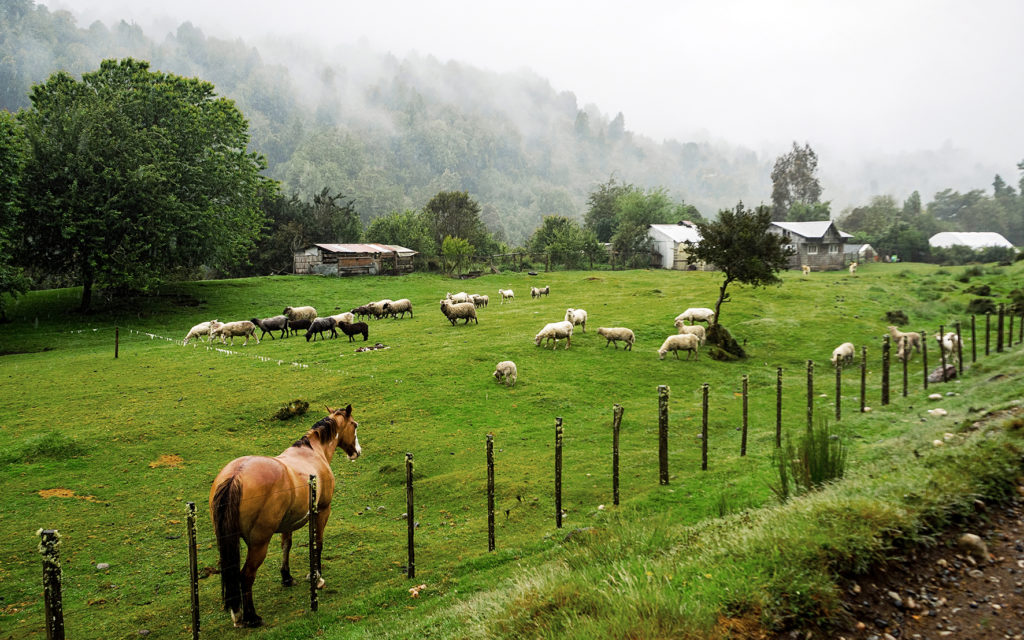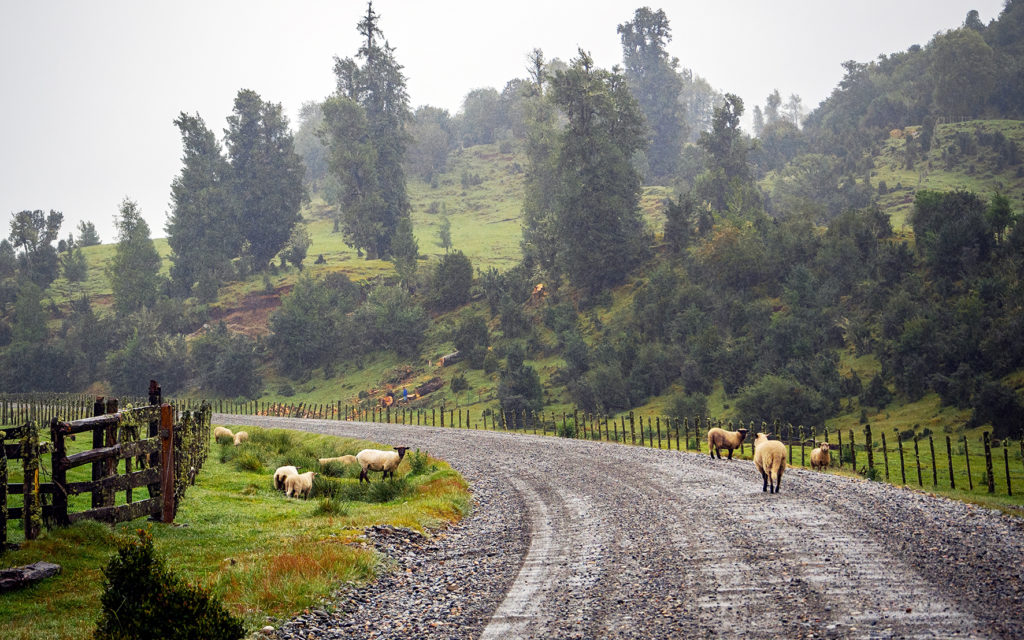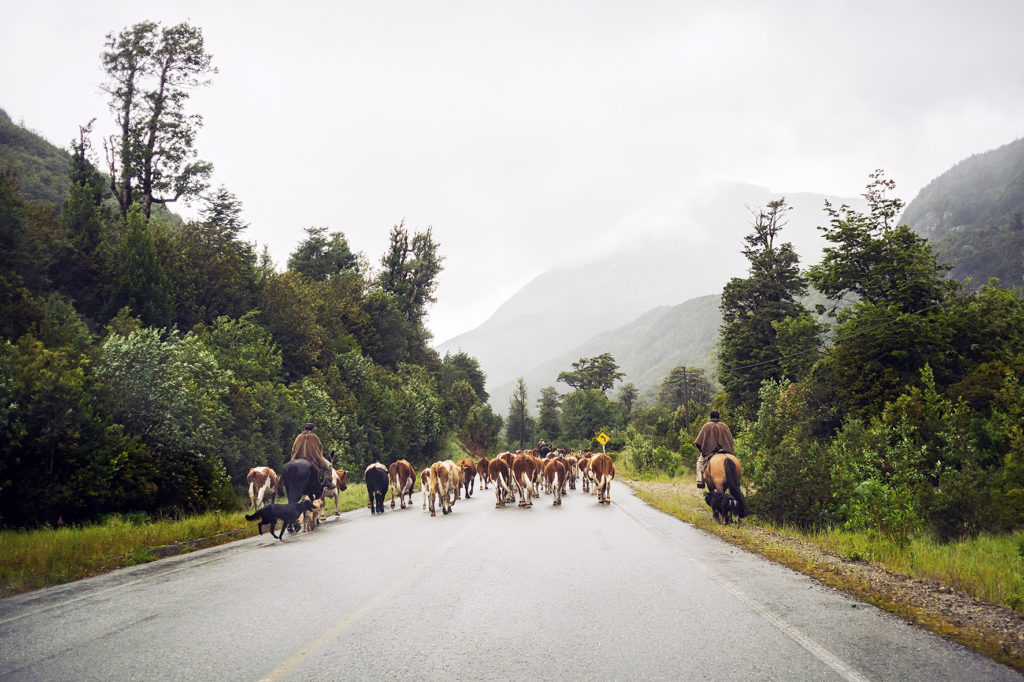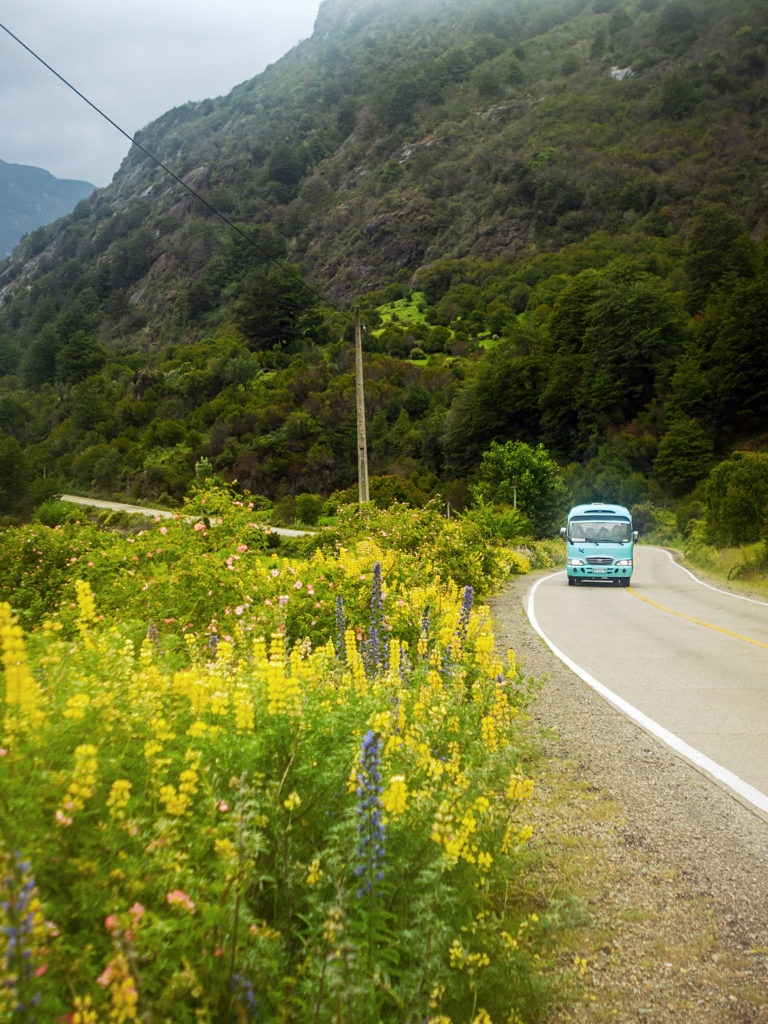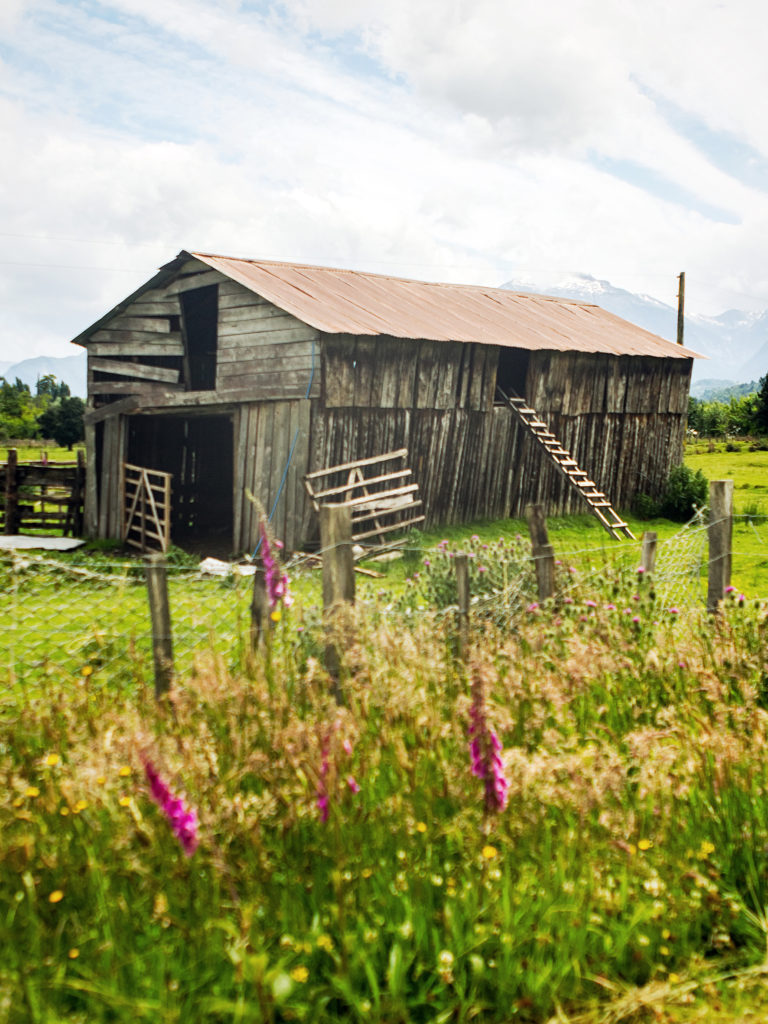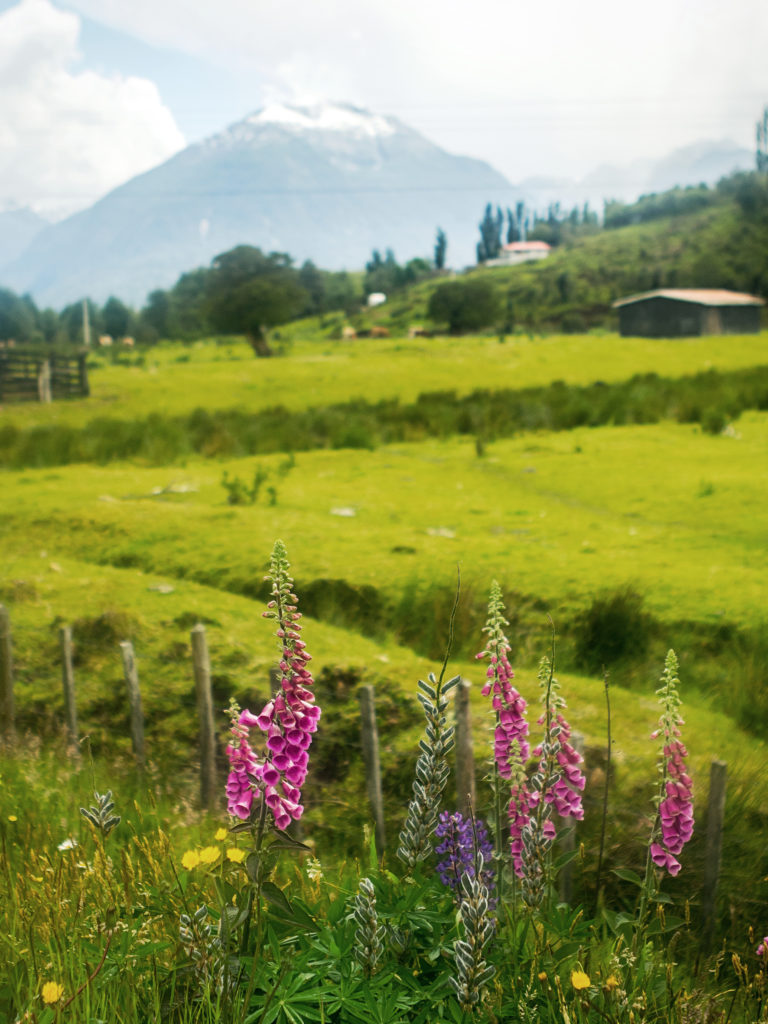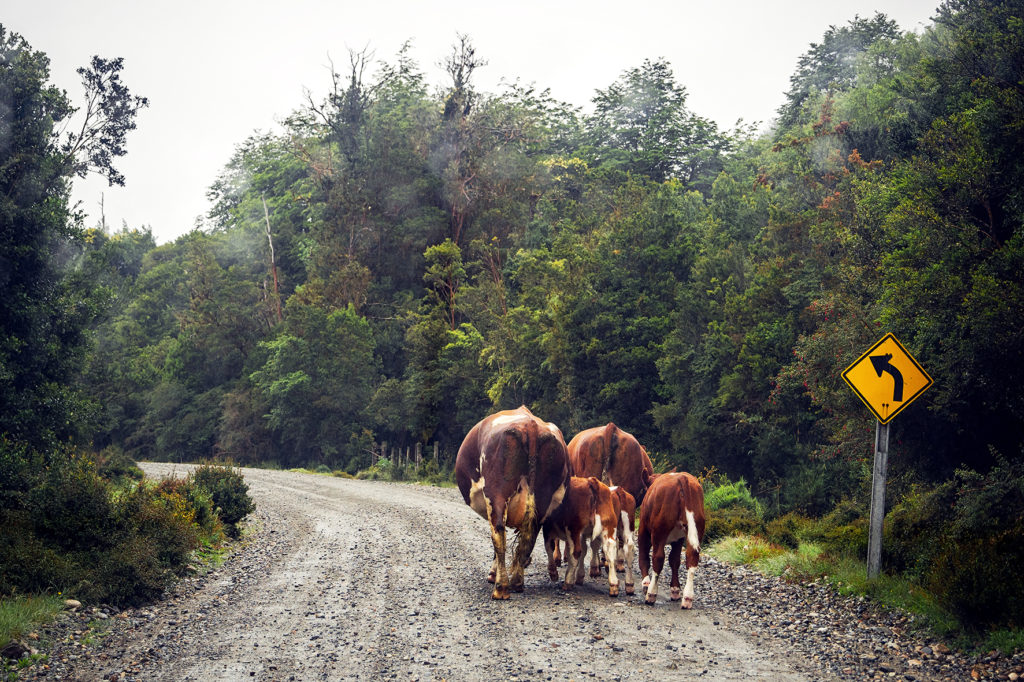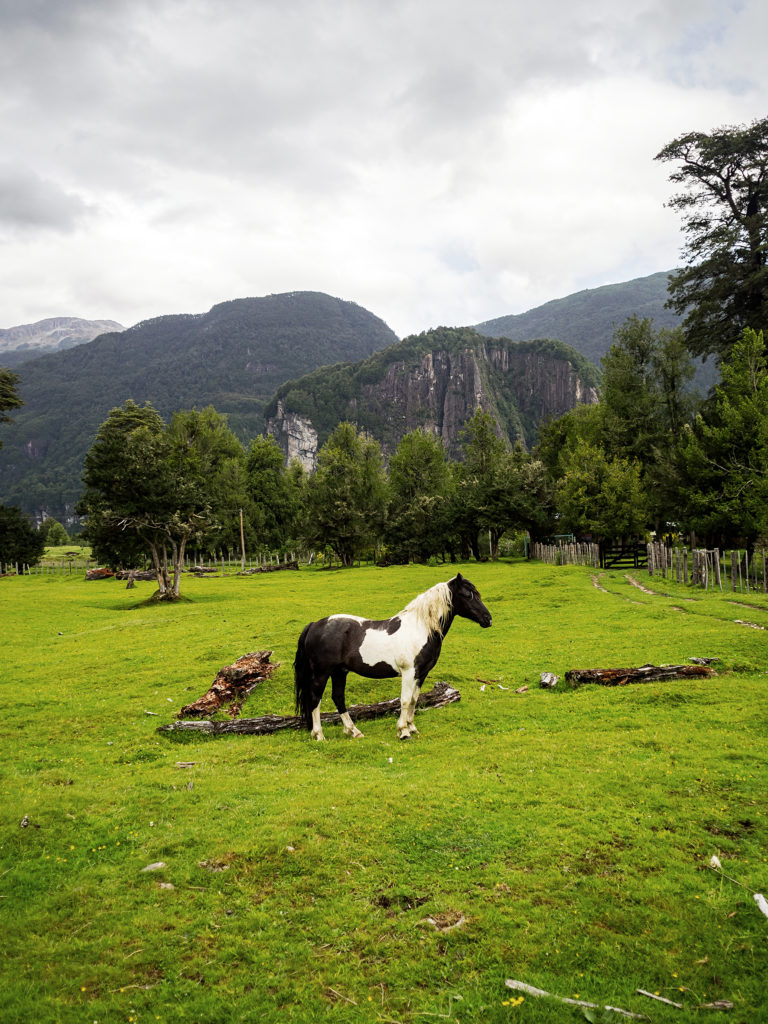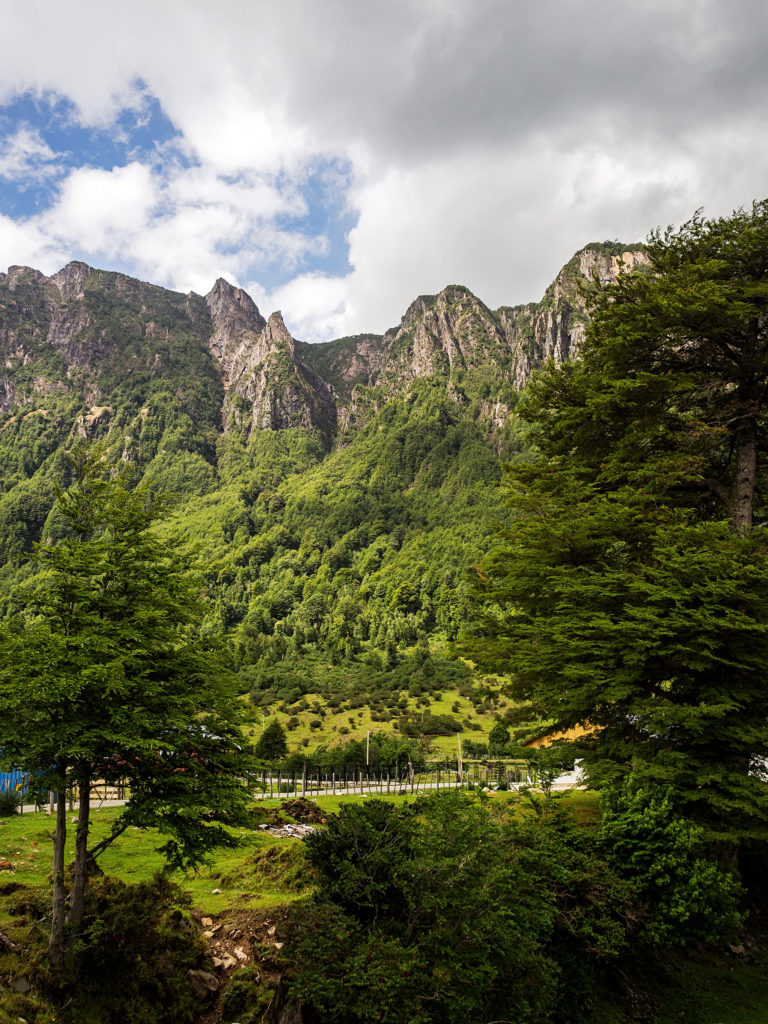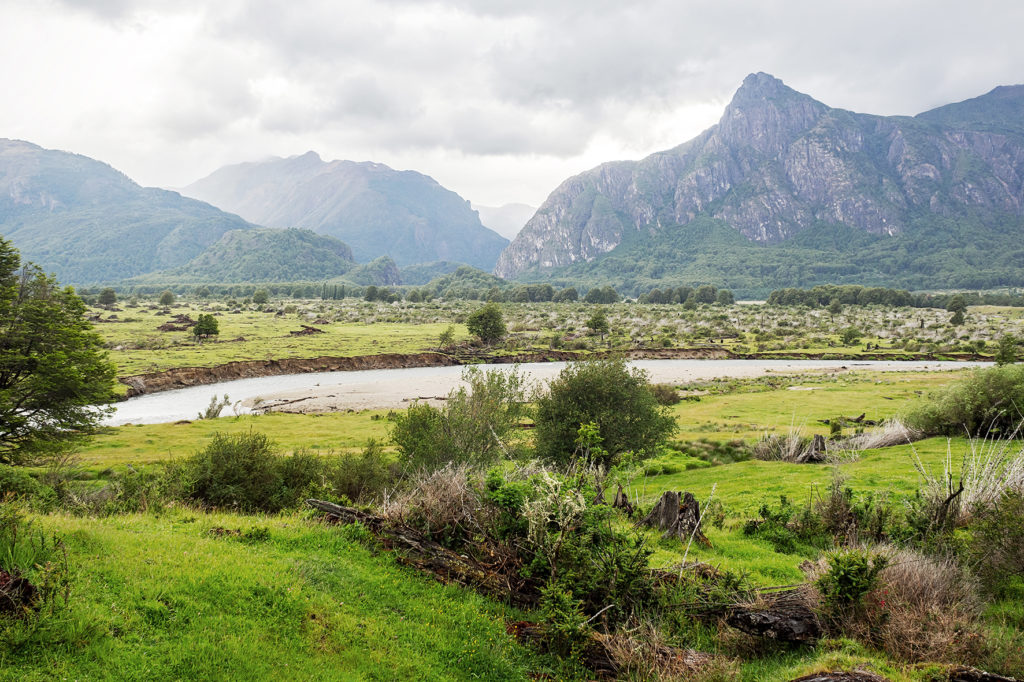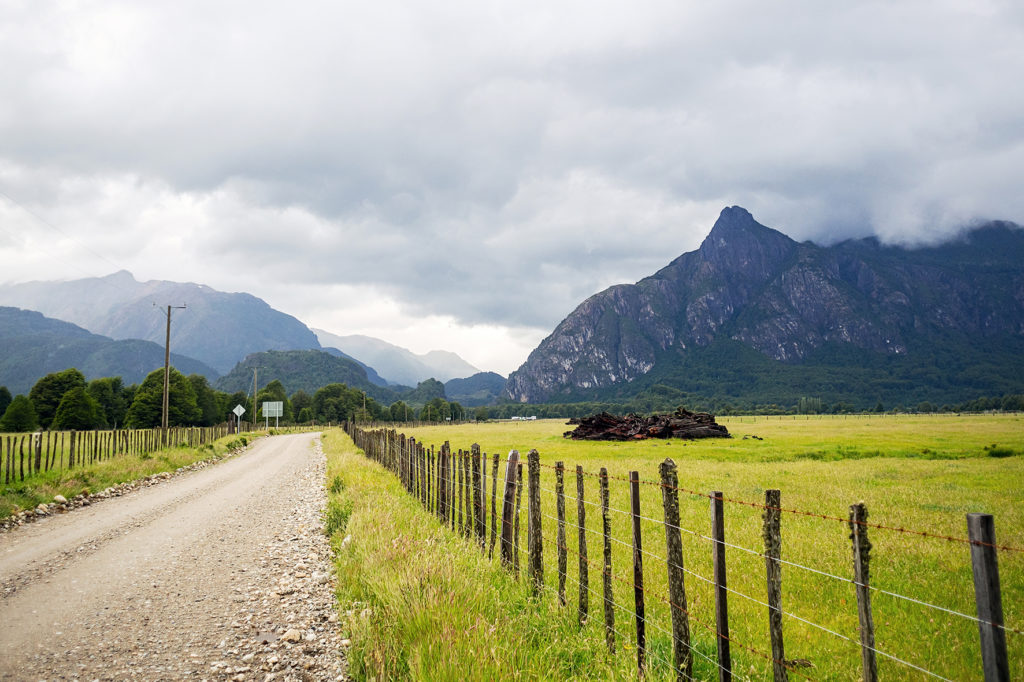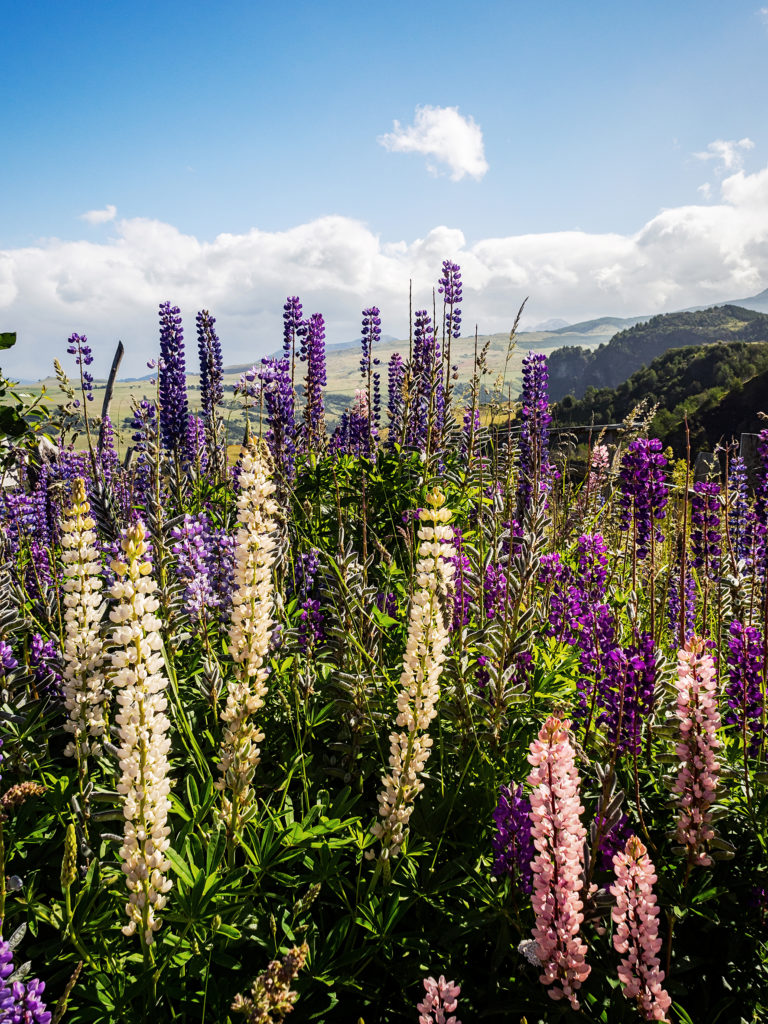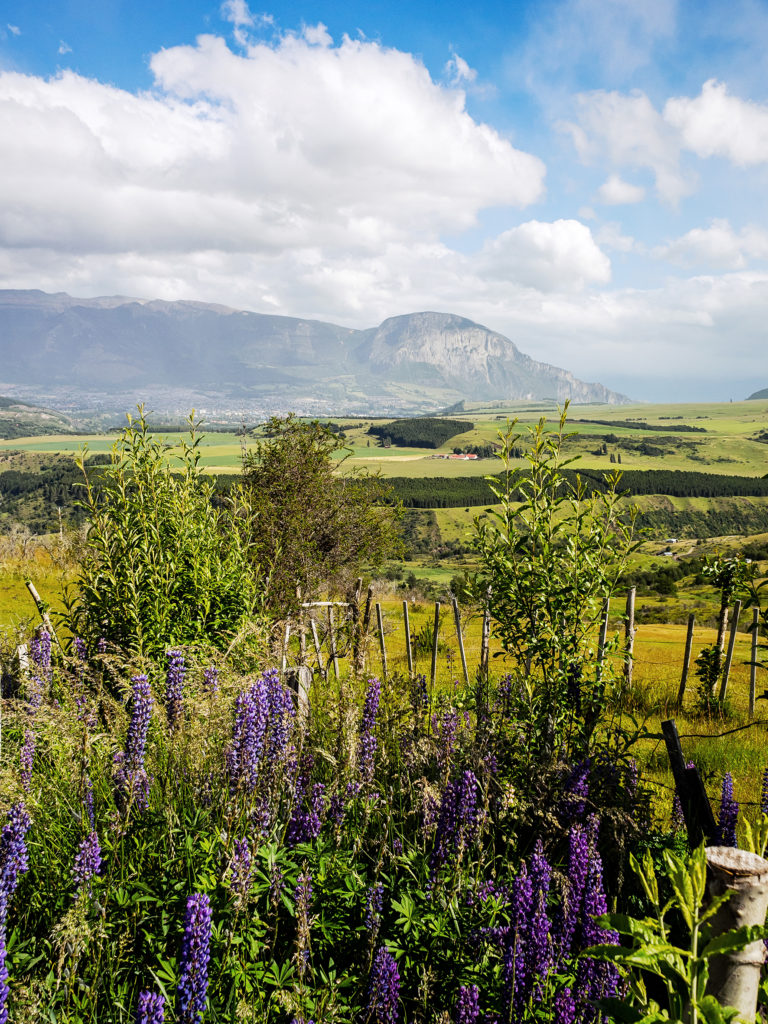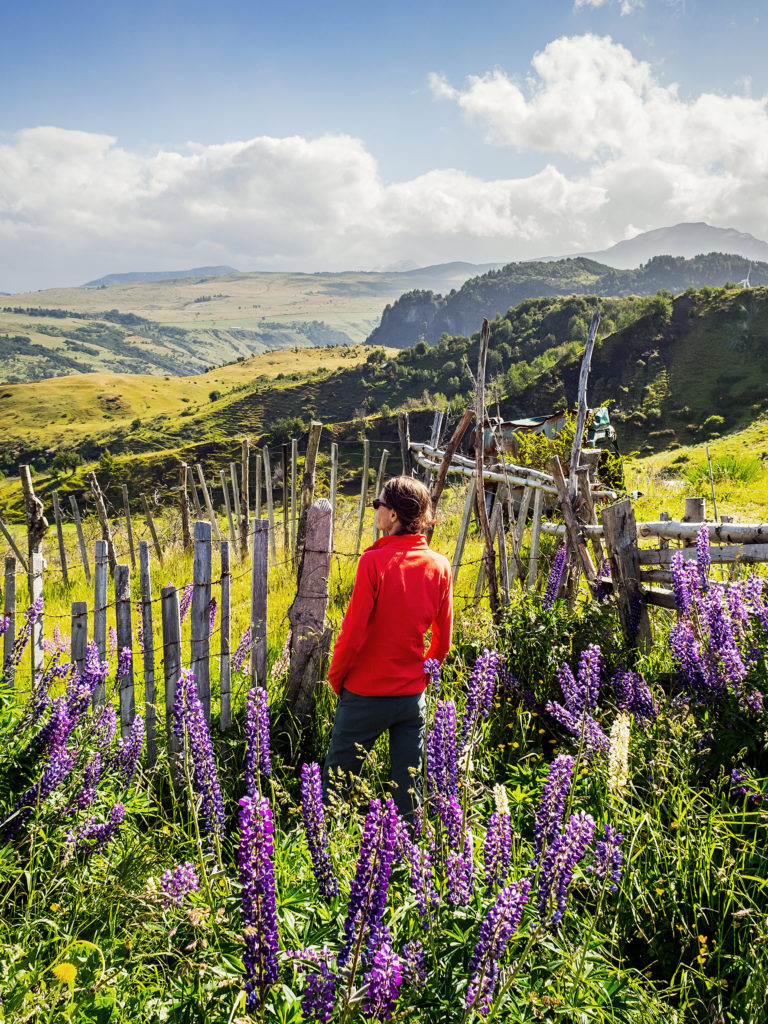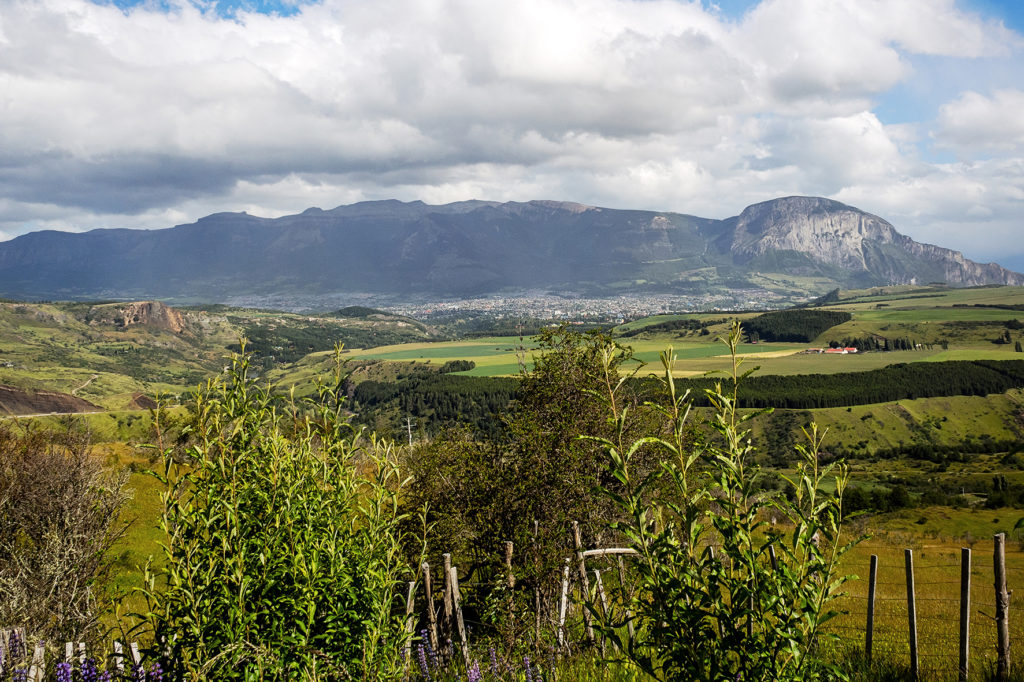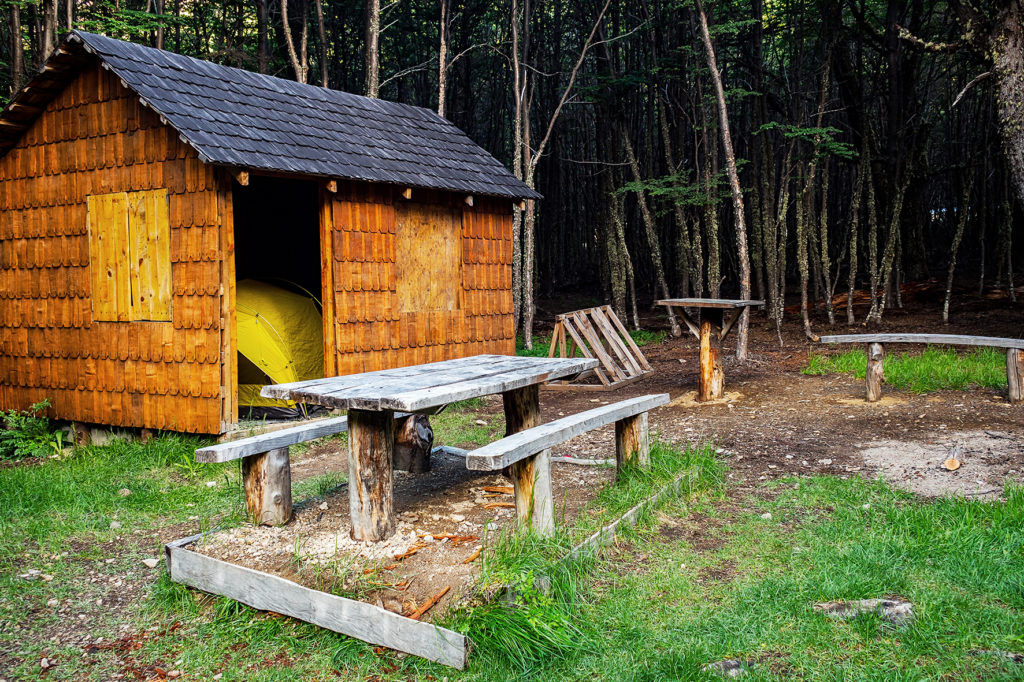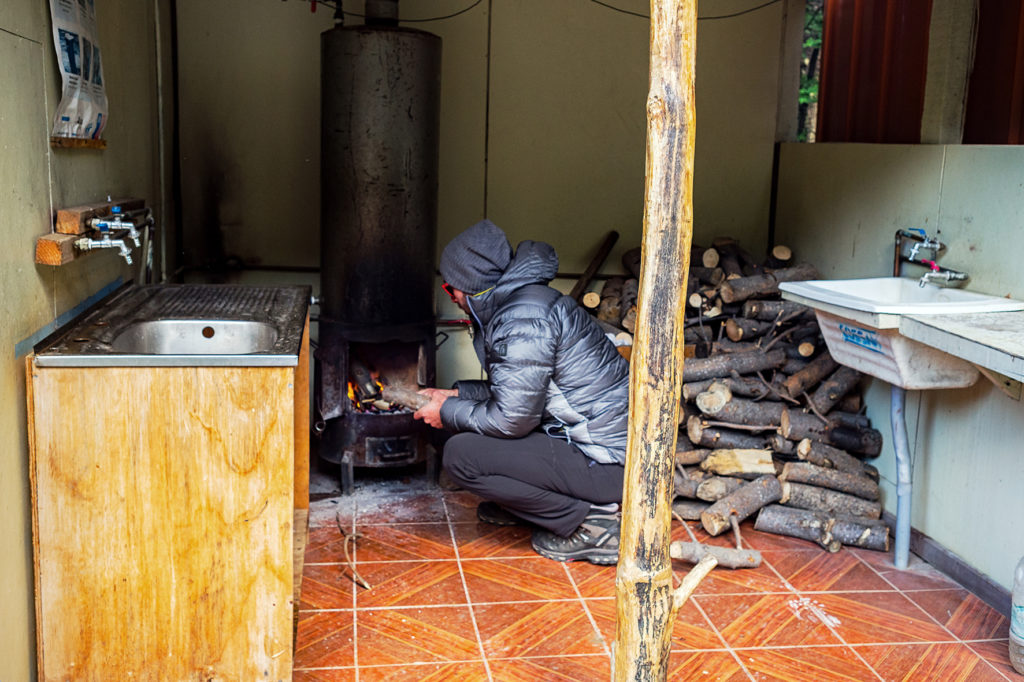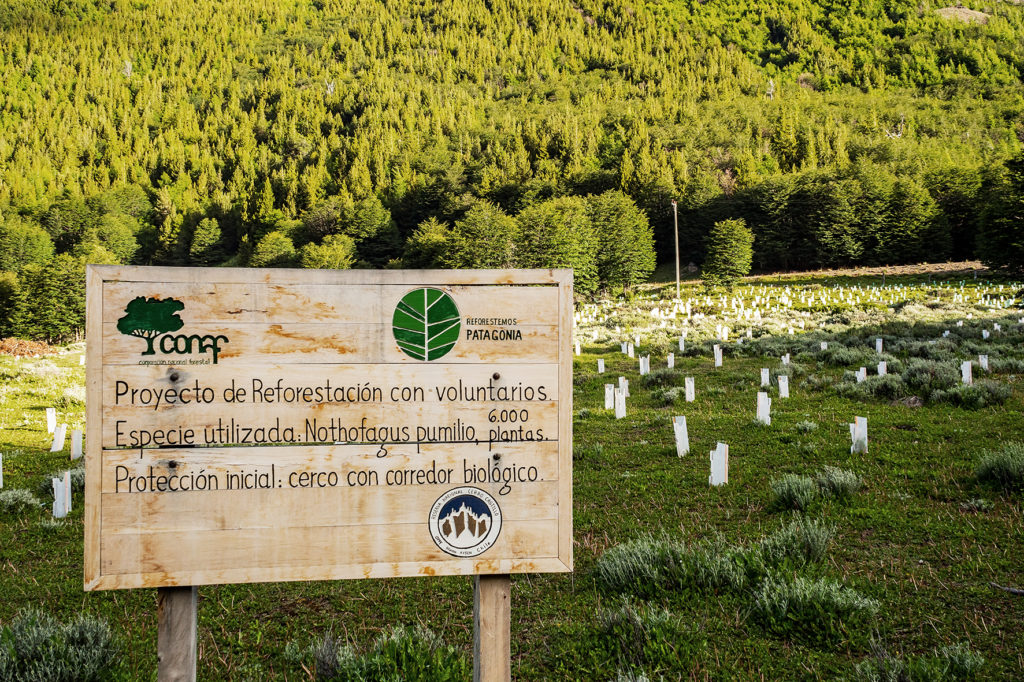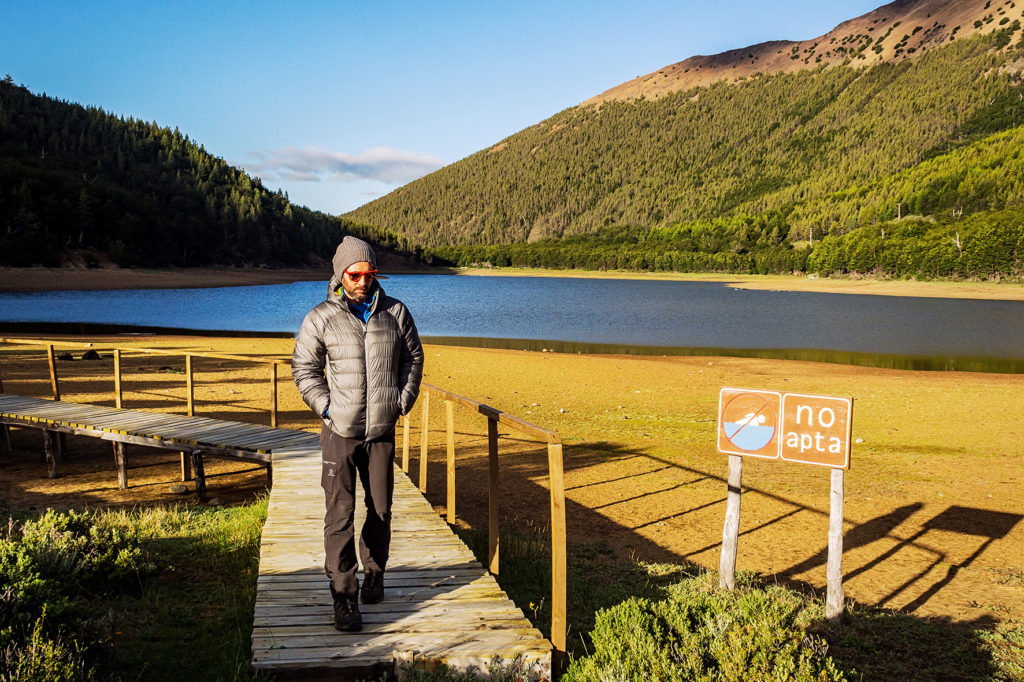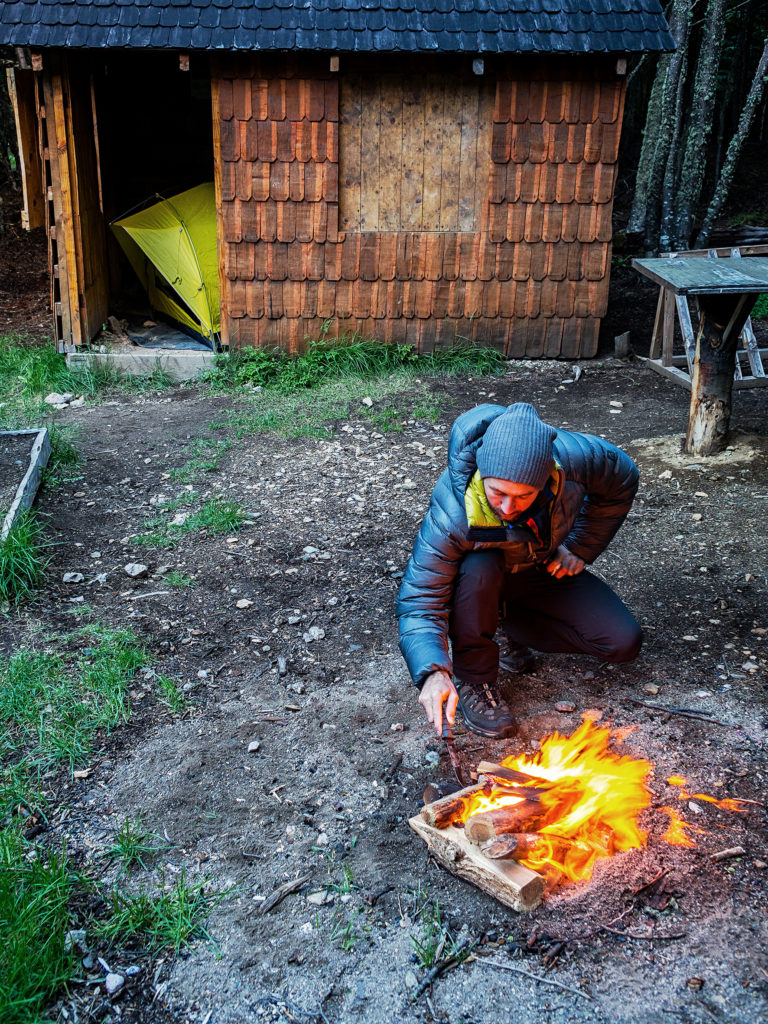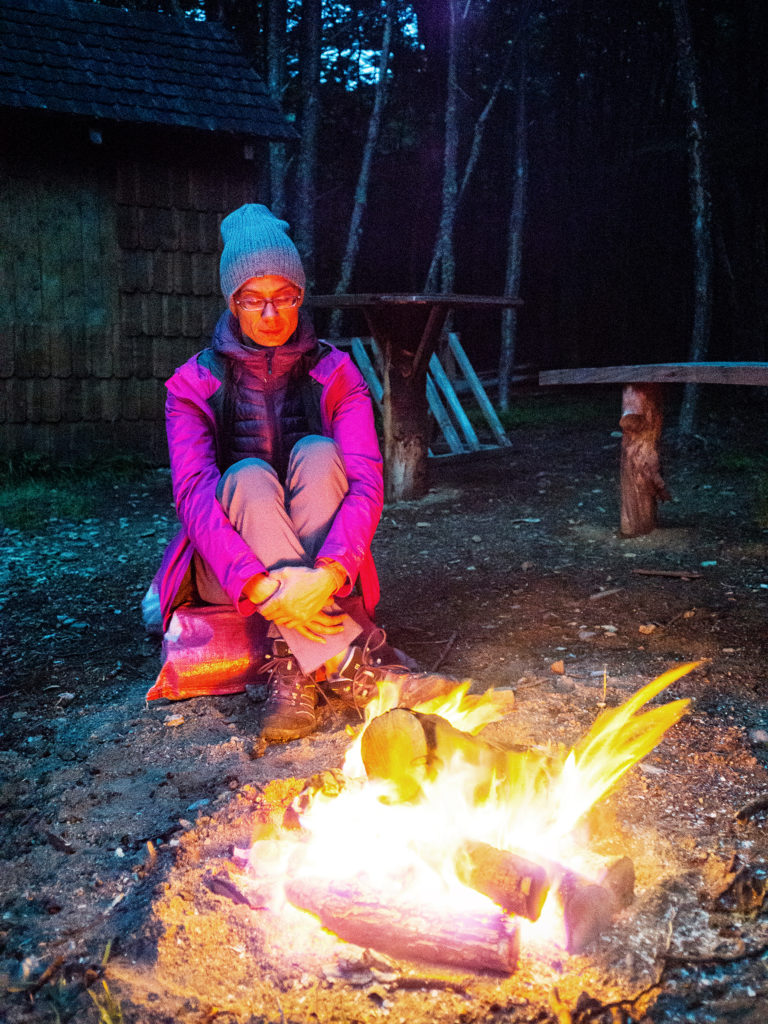On day 4 we had planned on doing a bit more driving than the previous days. Luckily, the road was in much better condition than the last two days, pretty much paved all the way.
We drove through Villa Amengual, then had lunch by the river at Manihuales. With its precarious-looking one-story houses made of wood and metal sheets, the town was charming in the same rugged and “stuck-in-time” way than all the other ones we had driven through.
Since we had time, we decided to make a detour through Puerto Aysen, rather than drive straight to Coyhaique. Located on the Rio Aysen near the estuary, Puerto Aysen is a port town of much bigger scale than the towns we had driven through so far. We took a stroll down its shops and restaurants-lined main street (there were even a couple of traffic lights!) and walked over to the Ibanez Bridge, famous for being the longest suspended bridge in Chile.
It seems that Chilean like to color their bridges orange, in cities as well as in the middle of the countryside, making them stand out where everything else otherwise man-made tends to nicely fit it with the surrounding nature – it was later pointed out to me that the orange paint could have something to do with rust-prevention?
We weren’t that impressed with Ibanez – it probably felt too modern and character-less to us, as we were getting used the charm of the more rustic small towns we had driven through. We enjoyed much more the sight of this smaller bridge, encountered on the side of the road after leaving Puerto Aysen.
We kept on driving for most of the day, which we didn’t mind as the green and lush pastoral landscape around us, even seen from the car, was just incredibly beautiful.
We got stuck behind a herd of cows, wrangled by three gauchos on horses and their dogs. Once again it felt like we were transported back into a different era, where time didn’t pass at the same speed. And it was incredibly refreshing to be in a place where still, in this world overwhelmed with technology, the most important way of communication was the one we were on: the road. If it wasn’t for this rough stretch of gravel, connecting towns together, most people who live in the area would be more or less completely detached from the rest of the country. Regardless of the political and military motivations behind it, the construction of the road made it possible for these communities to be connected to each other – and easier for outsiders to come visit. Whether it is ultimately a good thing or a bad thing is probably a matter of perspective, but in the meantime it was an incredible place to just be.
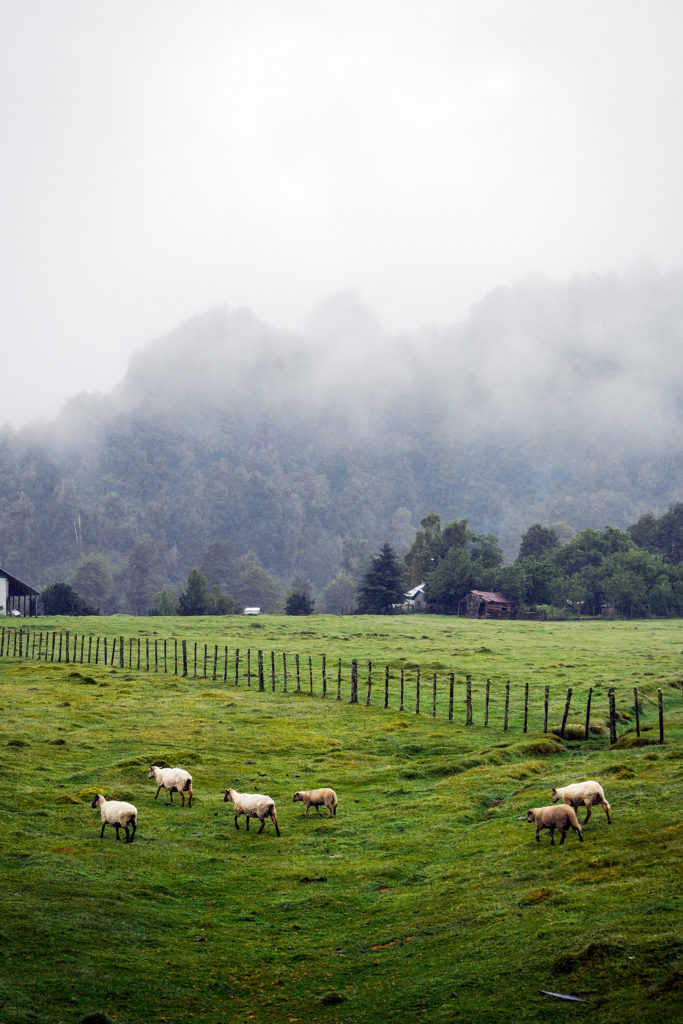
We arrived in Coyhaique later in the afternoon and after spending the last few days pretty much on our own on the road, it took us a moment to adjust to our surroundings in this city of 60,000 people.
We proceeded to replenish our food supply at the Unimart, the local supermarket chain. What we failed to realize until we hit the lines at the cashier, was that it was 5:30pm on a Friday. I guess no matter where you go, it seems to be the universal grocery-shopping rush hour. It was a bit of a “reverse culture-shock”, but we made it out in one piece, thanks to Brice having recently brushed up on his crowds-avoiding skills in France. After this short encounter with civilization, we couldn’t wait to get out and find ourselves isolated again in the middle of nowhere.
We stopped at the first campsite just before the entrance of the Cerro Castillo National Park. Camp Laguna Chinguay was completely empty, which delighted us. Once again, being somewhat shoulder season, there were no rangers at the park, so we camped for free (which is allowed as long as you clean up after yourselves). There was a small hut for each camp, so to continue our “indoor” streak, and also because the wind was picking up, we pitched the tent inside the hut. There was no fire pit this time, but signs indicated that fires could be built in appropriate areas. There was a large patch of dry dirt in front of the hut, where people had clearly made fire before, so we built ours in the same spot.
Another appeal of this campground was the possibility of a hot shower…which you had to heat yourself though, using a wood-burning stove. There was a stack of wood next to it so while I was setting up camp, Brice started up the fire in the stove. We took a walk on the shore of the Laguna before the sun went down, then retreated to the camp as the night was starting to fall.
As we were a bit higher up in elevation, temperature went down noticeably in the night, so we sat close to the fire and made noodle soup. The hot shower was pretty awesome and as we went to sleep I tried to focus my mind on how we had found the perfectly isolated spot for the night – and not so much about how we were alone in the woods, with strong wind blowing outside and the high potential for creepy scary dreams…I was pretty glad I never watched the Blair Witch project 😛
